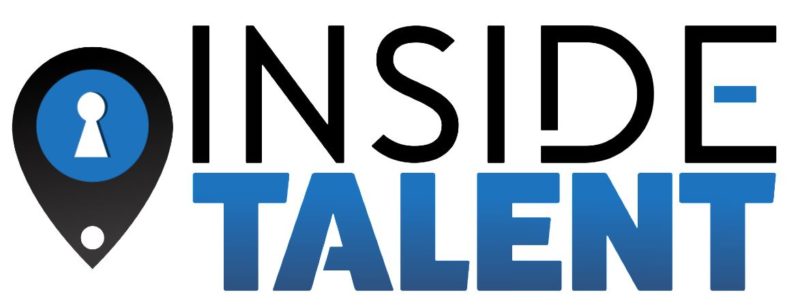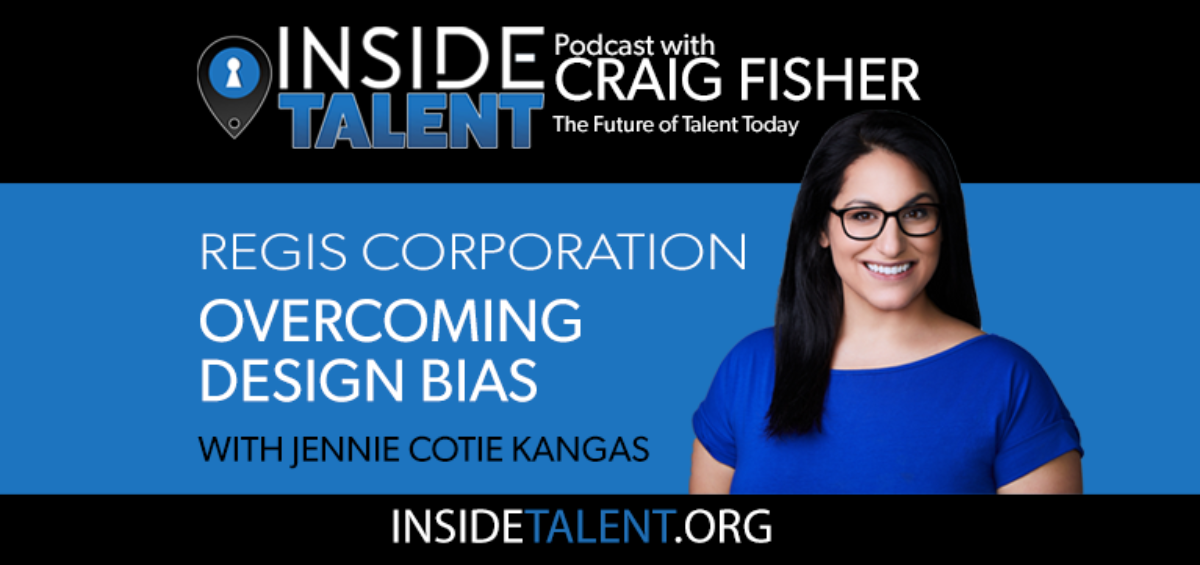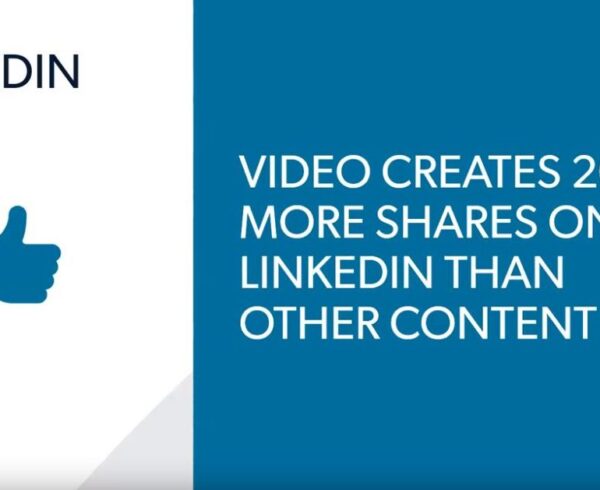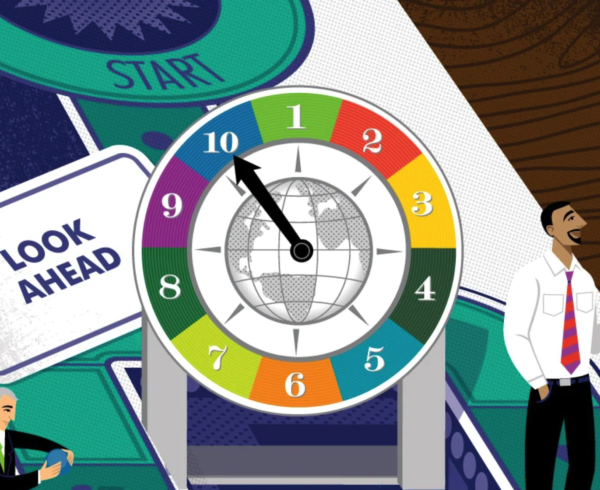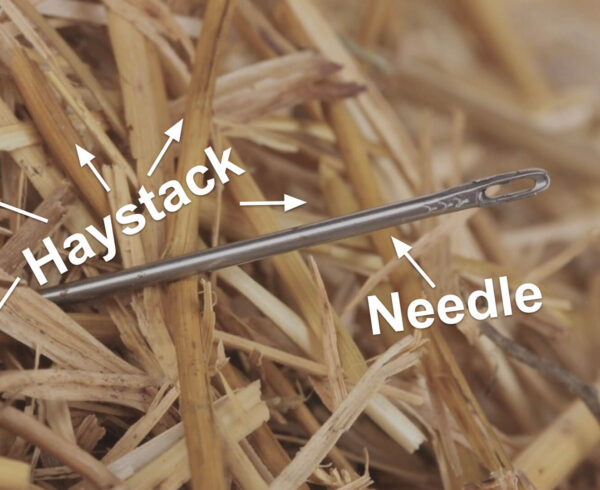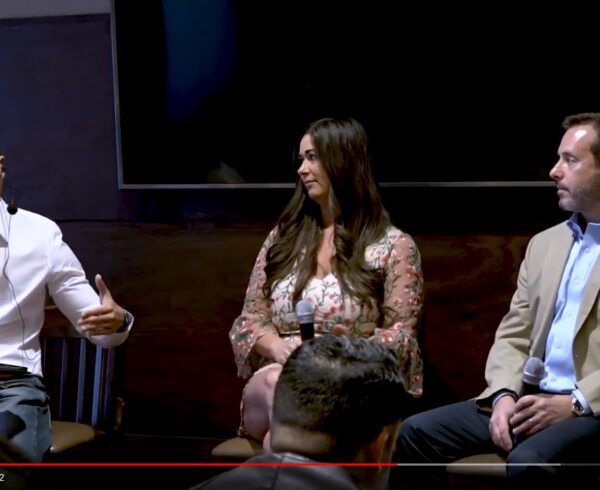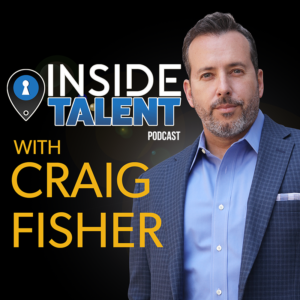In this episode Craig talks with Jenny Cotie Kangas, Director of Digital Experience for Talent Acquisition at Regis Corporation – the largest hair salon chain in the world which owns brands like Supercuts, SmartStyle, Cost Cutters, First Choice Haircutters, Roosters, and many more.
Jenny is a rare hybrid in the recruiting world. She describes herself like this: “My professional tool belt doesn’t look like many others. It’s comprised of a variety of tools, added and sharpened through years as a Project Consultant. I’m a Program Manager but by all other standards, I’m a builder.
As a kid, learning came hard for me. To understand what came easy to my peers I would identify patterns and reverse engineer. This helped my “faster than normal” brain understand and learn. From an early age, I viewed the world through systems. Having this mindset resulted in me being able to move learning to mastery quickly.
I became known as the girl in the project world you’d call if you didn’t have a person with the necessary skill set for a role. “She’s the Purple- Sparkly-Unicorn-Utility Tool and sharp as a tack,” a former Recruiter explained to a hiring manager, “She might not have the background today, but she will learn it and quick.”
 In October 2019 I was challenged to apply my systems brain to a new world. My insurance company had not given me enough money post water damage to finish my home. I had a couple of options – pay the extra money to finish the house or sell as-is. I went with option three and picked up an actual tool-belt. Single mom with three kids – I learned construction and personally rebuilt my house from the studs out.
In October 2019 I was challenged to apply my systems brain to a new world. My insurance company had not given me enough money post water damage to finish my home. I had a couple of options – pay the extra money to finish the house or sell as-is. I went with option three and picked up an actual tool-belt. Single mom with three kids – I learned construction and personally rebuilt my house from the studs out.
These days you’ll find me during the week focused on building frictionless processes and systems. Outside of work, you’ll find me in an actual tool-belt, finishing my house and helping others to learn the trades.”
Jenny and Craig discuss:
-designing outcomes with your audience in mind
-Store-level hiring
-Franchisees and how to get them to understand hiring, what’s the story for that?
-Failing fast and failing forward
-Design bias, when you go into a situation to help but those you are helping are pre-disposed to think anyone from “corporate” isn’t helpful.
-Solving hard, non-linear problems
-The concept of the mirror and window in hiring
-How to avoid basing recruiting on what we’ve traditionally done
-How to avoid shrinking your guardrails
-How to condense user adoption from 3 days to 15 minutes
-The power of a “what if?”
It’s always fun when Jenny and Craig get together for a chat. This is a good one.
Full text:
Craig Fisher 0:08
I’m Craig Fisher. And this is inside talent where we take you into the minds behind the scenes, and show you some of the coolest tools and best practices of some of the coolest people in the talent industry. Hey, it’s Craig Fisher. I am here with Jenny Cody, Kansas, better known as J. ck. And she is a Talent Acquisition Program Manager. She does techie stuff for recruiting at Regis Corporation. Jenny, welcome. Tell us a little bit about you and what you do. Thanks, Craig. Um, hi, everybody who’s out there. My name is Jenny juicy. JCK. For short, I am a program manager, which you’re probably wondering what does that mean?
Jenny Cotie Kangas 0:52
I handle all of our tech experiences, and we explained to my kids is I, I maintain Ironman suit, I’m a bit of a
Jenny Cotie Kangas 1:03
Marvel nerd. And it’s been a good way for them to kind of understand this. So I, you know, if iron man needs a new guided missile system, I’m the person who finds that that piece of technology, and then integrates it into the suit, and then make sure that the rest of the suit still works.
Jenny Cotie Kangas 1:21
And you know, with with the suits that I build,
Jenny Cotie Kangas 1:24
I’ve got to make sure they fit, there’s not a one size fits all person. So that is a little bit of what I’m about what I do are for Regis Corporation, and we have about just over 60 different brands in the hair space. And so mixture of franchise and corporate, and all sorts of fun.
Craig Fisher 1:44
That is all sorts of fun. And I know that your industry, along with many others has some significant
CF 1:51
personnel issues right now, right, trying to get people to apply for jobs, stay at jobs, not sit around and just take the stimulus money that’s floating around. We’re all anxiously waiting to see what happens in September, see if things actually change or if stimulus gets extended.
CF 2:12
It’s a crazy time right now. So you know, what are some of the issues you’re seeing? And, you know, what are you doing about it? And from a tech perspective, are there things that you know, you’re finding that are helpful in getting people through the process?
JCK
Absolutely. So important to note, we’ve got probably about 8000 different locations. Wow. Not to mention, we’ve also got corporate and education schools as well that we own in in that mix. We don’t have recruiters, that’s the recruiter. And so the tech in my world is really important, because the Tech has to enable the recruiting to exist. And so it’s really important that we get that tech, right? Because unlike other industries, where you might be able to tell, you know, the ROI of, of how higher in my world, you can’t open your doors, if you don’t have a stylist and so talent acquisition gets, it’s a different ballgame, right? Because I don’t have profit if I can’t, if I don’t have a stylist, I don’t have a way, many times even open my doors, for example, certain states have different regulations where you need to have a manager license. And so if I’m in a manager desert, how do I go about that? So it’s been definitely unique. And it’s been incredibly, incredibly important that we get the tech right. And so with that tech, it’s really making sure you know, I’ve got a
JCK 3:39
chair in my office always. It’s that, you know, design for your user design for your audience in mind. And my user sit in that chair, not me. And I’ve got to build experiences for them to be able to understand hiring and hiring, not something many of them have done before. So it’s
CF 4:01
a lot of fun. Yeah, store level hiring. And recruiting is always interesting, right? So you and I talked about this I worked with Best Buy years ago in Minnesota where you are
CF 4:15
to sort of help fix their store level hiring because they, their HR ended up being people who got promoted from, you know, within the stores, and all the hiring happened at 1000s and 1000s of locations, not from a central recruitment hub. And so, you’ve got to have standards, right that go you know, across the entire net, which is almost impossible to enforce. And,
CF 4:48
and then you’ve got all this geo fencing and regional location stuff that you have to accommodate for with with tech and advertising and, and things like that, and so it
CF 5:00
It’s tricky, but it’s fun. Now, you know, one of the things that you end up with is
CF 5:08
how do you control things? Like, you know, are we making sure that our workforce and applicants and our job descriptions and everything, are attracting a diverse workforce? Right?
JCK 5:23
Well, then I’m gonna go one more, you know, qualifier, big game changer on that. Now I have franchisees, right. So it’s not I can’t mandate what you’re doing from a hiring process. I’ve got to be the next that turns ahead, to get you to understand why you should even care about this world. You know, why should you care about hiring. And so that storytelling piece to me making sure that we’re being incredibly crystal clear with the why behind first, so that we can get that buy in for the how, and the what I think is really important, too. So I’ve done a lot of work with franchisees I’ve worked for, you know, a lot of TGI Fridays subway, companies like that, and different industries as well, where they actually have brought me in to have these conversations with a whole roomful of franchisees. And these franchisees, a lot of them, you know, do very well, they own multiple stores, and they, you know, they’ve, they’ve got their own problems, but they are thirsty for what the corporate entity can share, can help. Right, can you know, you’re, you’re like a shared service at this point, that is supposed to be assisting them with their hiring, yet, not necessarily telling them what they have to do. Exactly. And so is it complicated? Is it tricky? Um, yes. But it’s also so I like to solve hard nonlinear problems, like, that’s what gets me excited. And so this has been an interesting one, because there’s so many facets to it that don’t present on the front end, that you don’t even think about, and then you think, hey, I’ve got it, right. And you might go to roll something out and be like, Oh, yeah, that was wrong. So like, failing fast and failing forward at every step in the game is so incredibly important. Because like, the chances are, you’re not going to get it right 100% when you come out of the gates,
JCK 7:14
and you’ve, you’ve had a really continue to iterate, you know, you’re going to market. So, for example, we were rolling out a beta development, beta co development with another vendor, bringing franchisees to the table to build solution that was gonna help them for hiring. And
JCK 7:33
I’m like, Okay, we’ve got the right product, you’ve got the right, this, we got the right that, you know, all the things. What I didn’t account for was the design bias that my franchisees would have in their mind. That said, when I get technology from Regis Corporation, it’s not going to serve me, it’s not going to it’s going to be clunky, maybe it’s not even going to work. And
JCK 7:55
that, that design bias of like not understanding, it was so important, because what ended up happening is a turned to a vendor and said, Okay, we’re going to try something new. I’ve got to get somebody into this tech experiencing it ASAP, because I can’t talk at them. I’ve got to allow the experience to, for them to experience this. And then we can talk to them about it. And so we completely shifted the way that we went to market with that. And we saw user adoption go from three days to 15 minutes. And it’s like that was just from the power. But what if so, I love that.
CF
So this theory of design bias is wonderful. And I think I think you’re right, I think we do go into the process of designing, recruitment or tech or whatever it is, based on what we’ve done before. And, you know, I think you’ve told me that you think that puts up narrow guardrails?
JCK
It definitely does. And so I so just to square for everybody who’s who’s tuning in, when I talk about design bias, what I mean by that this is a term that’s used by scientists a lot when they’re looking at research. And so what are what am i researching, and then I bias in the way that I’m going about that research.
JCK 9:11
And in tech, and especially in recruiting, the way that I can present itself as if I’m looking at building something new and something different.
JCK 9:21
I tend to use my historical experiences to determine what success looks like in the future. And if I do that, that’s shrinking my guardrails. And so you can get the right people on either side of the table that understand design bias and are working like you know, to overcome design bias. But then you have to remember too, that that your users are the humans that use your technology, also have a design bias that you’ve got to work against too. And so you’ve got to make sure to overcome that hurdle as well. And so, you know, what does it look like to do something slightly different? You know, instead of looking at a process and being like, Okay, I’m going to I’m going to
JCK 10:00
Change this lever or change that lever, and instead I want to look at, okay, what does success look like? So if Craig and I are working together, Craig and I determine, you know what success look like here for this organization. And then we make sure that that’s calibrated across the entire leadership team, because success shouldn’t just be the same for him. And I, and also should be the same success for the CFO, for the CEO, for Ops, for anybody else who’s involved. So we want to make sure that that success is calibrated. And at that point, we’re going to take that success, and we’re going to reverse engineer to figure out how to solve for it. And that’s how you really kind of systematically built designer.
CF 10:40
I love it. So yeah, franchisees will go rogue on you and go get their own tech, if they have the bias that whatever you’re going to give them doesn’t work, right. Ultimately, my goal is to.
Unknown Speaker 10:53
And it’s been a little different historically, but like I’ve got to meet and raise them to understand this, I got to teach them the why behind recruiting before I can even get them to be brought on like with what we’re trying to do. So my first.
JCK 11:06
My first project actually in talent acquisition was a Panera Bread. And they hired me specifically because I was a project manager who had never worked in talent acquisition network. And their goal was to figure out what they were doing wrong with recruiting, and specifically, you know, on their field source. And so I went in, and you know, what ended up? What ended up coming from my discovery process was you’re taking managers who have historically come from the fast food industry, where you stand behind a counter, and you don’t engage with your customers. And then we’re tasking them of hiring. And one of the areas that we’re missing is the people who come to our stores every single solitary day, and keep coming back. And so I should, so this kind of aha moment came forward of what if I taught them how to source? What if I taught them how to recruit stuff, like, you know, outside of the step out from behind the,
JCK 12:06
you know, from behind the counter and go have those conversations. And I remember the first couple of managers that I did this alongside with, and a couple of them were really apprehensive about this. And I was like, What do you got to lose? Right? Yep, I could be totally wrong. But like, what’s the worst that can happen? And one of these actually happened in Apple Valley, not too far from here. And there was a table of five students who were doing,
JCK 12:30
like a study session for Spanish and went up to them like, Hey, guys, what are you working on? They’re like, Spanish and like, sweet. What’s your favorite? You know, who’s your teacher? Because I went to school around. I went to school in that valley. And they said, Professor Watson was like, Oh, my gosh, I had proof a two. They’re laughing. They’re like, he was around that long ago. I was like, thanks. not that old. But I said, you got a job. Like, actually, we’re looking for one that was like, on our career. They were like, Are you serious? It was like, yeah, we’re not, like, see this guy right here. He’s manager, it’s gonna interview you right now. I said over there. And he did. And he ended up hiring four out of the five kids. The only reason he didn’t hire the fifth was because he wasn’t looking for a job. And he couldn’t because of sports. But flash forward three years, to those people ended up actually moving under management. And so like the power, but what if, right, so just taking that time to teach the skills for what you need to do this yourself? Teach Amanda fish, essentially, it’s really powerful. And so often, we’re like, ooh, texts. Awesome. And it’s seamless, and it’s great. But we also have to remember that there are humans that use it. And sometimes, no, we can just teach them what we know.
CF 13:45
I love it. So with, there’s a book there, right? I think already. This is it. That’s it. That’s an amazing case study.
CF 13:53
Alright, so with corporate owned stores, and then franchise stores,
CF 13:59
how do you try to maintain the culture? I mean, that’s got to be interesting, right? And everybody has a different idea of what that should mean. And you know, you and I have talked about the fact that culture fit is not a good thing.
JCK 14:17
Yes. Oh, culture fit. That’s one of my that’s one of my least favorite buzzwords. And actually funny story recently, Batman and I were backporting on a new hiring solution that he was looking to build. And I gave him a hard time because he’s like, yeah, I gotta find some people to back board with us. And I was like, why don’t you ask me? And he’s like, Oh, I forget that you’re tech. And I’m like, Yes, I’m tech. That’s what I do. goofball, like, and so we ended up jumping on this call. And Mike’s taking me through the process, I start to finish. And I’m like, you know, animated and listening and like, I talk with my hands and my nonverbals you can typically tell what’s going on and I’ll play poker very well.
JCK 14:59
And you
JCK 15:00
Get to one specific point in my face just close a dark and he’s like, Whoa,
JCK 15:05
what was that? I was like, I’m sorry, I hate that word. And he’s like,
what I was like culture fit. I hate that concept. It’s such a buzzword. It doesn’t like there’s no universal definition, it means something different to everybody else. It’s a way to, you know, performatively, like, save my decisions are okay. There’s just so many aspects to it, I hate it. And he’s like, tell me more. I was, you know, and I said, Mike, it’s really important when you’re building a process that you get the labels, right. And you you find words that have definitions that don’t have mixed meaning. For example, culture
JCK 15:49
can mean something differently to everybody who says it.
JCK 15:54
And so he asked him additional questions, and I gave him my reasoning. He goes, Okay, I get it. So what’s the solution instead of culture fit? And I was like, Ooh,
JCK 16:05
that’s a good question. And we ended up coming in settling on the concept of a mirror. And so in an organization,
JCK 16:16
if I’m looking for something that I already have in house, whether it’s a persona, or whether it’s a specific demographic, or whatever it is, I put the mirror in front of that. And then I’m using that as a model for what I’m going to look at and hire. The flip side of that was a little harder to come in, figure out. And that was the concept of a window. And Mike, I’m sorry for them not stealing your thunder, this was 100%, like mutually built. But
JCK 16:42
the concept of window is you’re from within the organization, you’re strategically looking out at something you don’t have, and determine you want to go find it, whether it’s like, I’m, we need to increase diversity, I need to increase my neurodiverse hires, I need to find this specific person or skill set. But you don’t have it within your organization. You’re looking from the outside in. And so that was kind of the mirror the mirror window concept.
CF 17:10
Yeah. I love it. Alright, so design bias and culture fit are bad.
JCK 17:18
Well, design bias isn’t necessarily bad. It’s just something that you have got an understanding that you have it in order to overcome it, if you’re looking to build something out of the box and truly different. Mirrors are okay, windows are better.
JCK
Depends on what you’re looking for. Again, like if I want to have a homogenous organization, that is the same exact experience as everybody else. And that is my idea of success. You know what, Amir is great.
JCK 17:50
But if you think that like, you know, collaboration exists better when we have diverse and inclusive, you know, organizations, yeah, Windows gonna be your best bet.
CF
I love it. It sounds like something that you and Batman should talk about at talent net live November 12.
JCK
Oh, gosh, that would be a fun throwdown. All right.
CF
I think it will be. Alright, Jenny, Cody Kangas. JCK. Thank you for joining us.
JCK
Thank you for having me, Craig. This is awesome for everybody at home. I hope you’re having a great day, and go build things that are strong.
CF 18:30
Thank you for listening to inside talent. Learn more about the future of talent today at inside talent.org where you can sign up for regular updates, and you can subscribe to our podcast on iTunes or your favorite podcast app.

